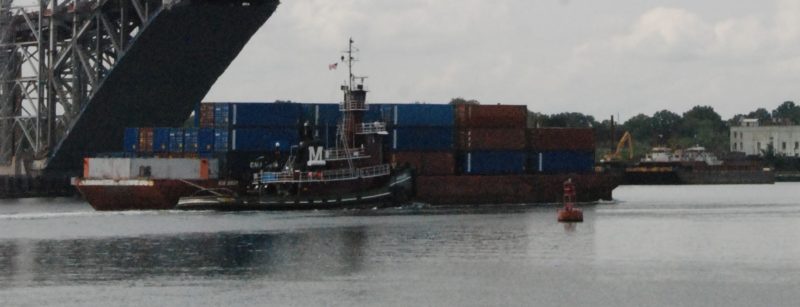In New York there’s always a down side to a good economy: soaring prices, escalating rents, bigger crowds.
But there’s one thing that was bad before and is only getting worse: the region’s mounting highway and rail problems.
Commuters know the agony most acutely, and congestion and delays are beginning to threaten the region’s overall economic well-being, experts said at a Sept. 27 conference at the State University of New York Maritime College.
“Because of highway congestion the city’s economy loses almost $1 billion a year,” said Andrew Genn, senior vice president for ports and transportation with the New York City Economic Development Corporation.
The SUNY campus at Throgs Neck, N.Y., is just eight miles from where Interstate 95 crosses the Hudson River from New Jersey on the George Washington Bridge. On a typically congested weekday, the drive can take over an hour.
“You all made it here today, but it took time,” said Jim Pelliccio, president and CEO of the Port Newark Container Terminal, to the audience of 250 who gathered to hear about efforts to get cargo off the highway and onto barges.
Those delays are growing, and “it will go from taking a lot of time, to not happening, and the region will suffer,” he said.
One pioneer in the region is the Red Hook Container Terminal in Brooklyn, N.Y., the eastern anchor of the cross-harbor container-on-barge service with Port Newark in New Jersey. Terminal president and CEO Mike Stamatis has been building that business since he arrived seven years ago, when “there wasn’t a lot of talk about this back then.”
“The message from industry then was ‘marine highways don’t work here, they do it in Europe,’” said Davies. “Seventeen years later it’s amazing how much that’s changed.”
Seacor AMH LLC started a Lower Mississippi River container-on-barge service in June 2016, shuttling empty containers from its Memphis, Tenn., facility down to Port Allen, La., in cooperation with the Port of Greater Baton Rouge and the Port of New Orleans.
At Port Allen the containers are loaded with plastic resins, and moved downriver to New Orleans for export. By February 2018 the barges were moving 276 containers a week.
“Every one of those boxes is not going to be traveling on the road,” said Davies.
There’s high hope for similar success in the Northeast. Red Hook’s container-on-barge moves take about 35,000 truck trips off the region’s highways annually. It will be a hub for longer hauls, with Marad’s designation of a Northeast Marine Highway linking New York, Rhode Island, and Portland, Me.
With the arrival of the big neo-Panamax containerships carrying 14,000 TEUs and more, the Marine Highway will be an alternative for shippers instead of the often choked I-95 corridor through southern New England, Stamatis said: “Think about how all that freight is going to move.”





